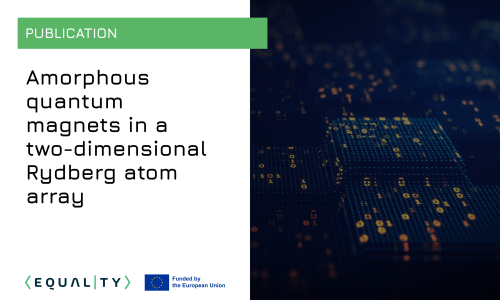

The study of many-body interacting quantum systems is arguably one of the major challenges of modern physics. From a classical simulation perspective, extracting their relevant physics is a hard problem due to the exponential increase of the Hilbert space with the system size.
This fundamental bottleneck is typically circumvented in state-of-the-art numerical methods by taking advantage of the special properties of physically relevant states, as well as intrinsic system symmetries, e.g., discrete translational symmetries in crystals.
This is possible for amorphous solids, i.e., systems which feature well-defined short-range properties but lack long-range order. There are still many open questions concerning the emergent collective behaviour in amorphous materials, particularly in the quantum regime, where the numerical simulations are extremely challenging.
In this context, quantum simulators offer a promising alternative to their classical counterpart. These versatile quantum systems, used to mimic complex quantum systems in a controllable way, allow for the exploration of complex regimes that are hardly accessible with classical computers.
In this work, EQUALITY partners from Pasqal propose to simulate amorphous quantum magnets with Rydberg atoms trapped in optical tweezers and benchmark the properties of these systems in the quantum regime with a perturbative approach.
First, the authors present an algorithm to generate amorphous quantum magnets, suitable for Rydberg simulators of the Ising model, and use semiclassical approaches to get a preliminary insight of the physics of the model. In particular, they calculate mean-field phase diagrams, and use the linear-spin-wave theory to study localization properties and dynamical structure factors of the excitations.
Finally, they outline an experimental proposal based on Rydberg atoms in programmable tweezer arrays, thus opening the road towards the study of amorphous quantum magnets in regimes difficult to simulate classically.
Read the paper: https://doi.org/10.1103/PhysRevA.110.012602
